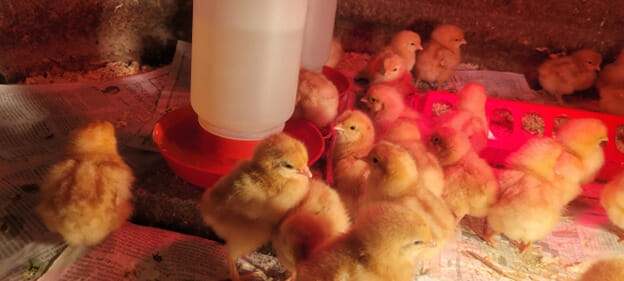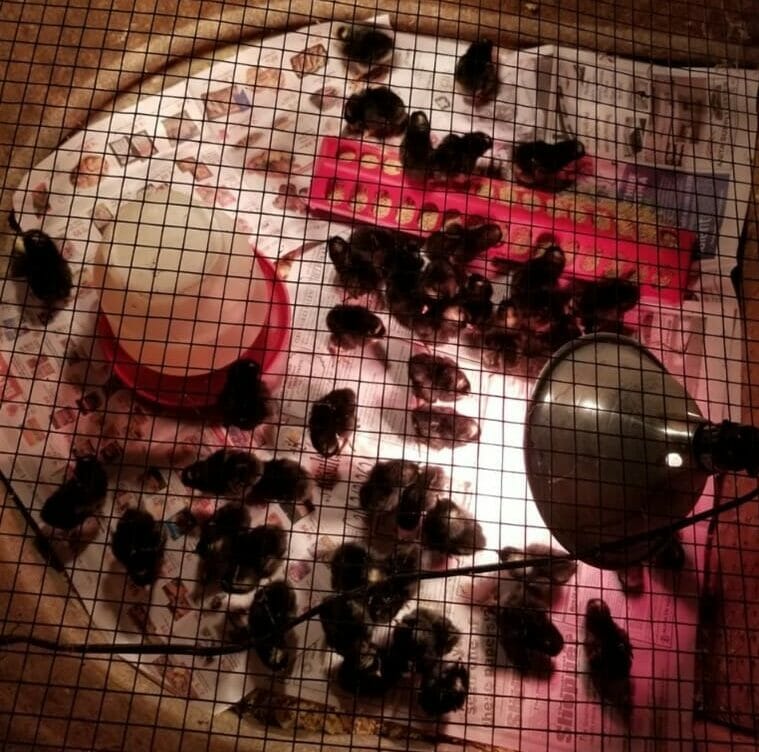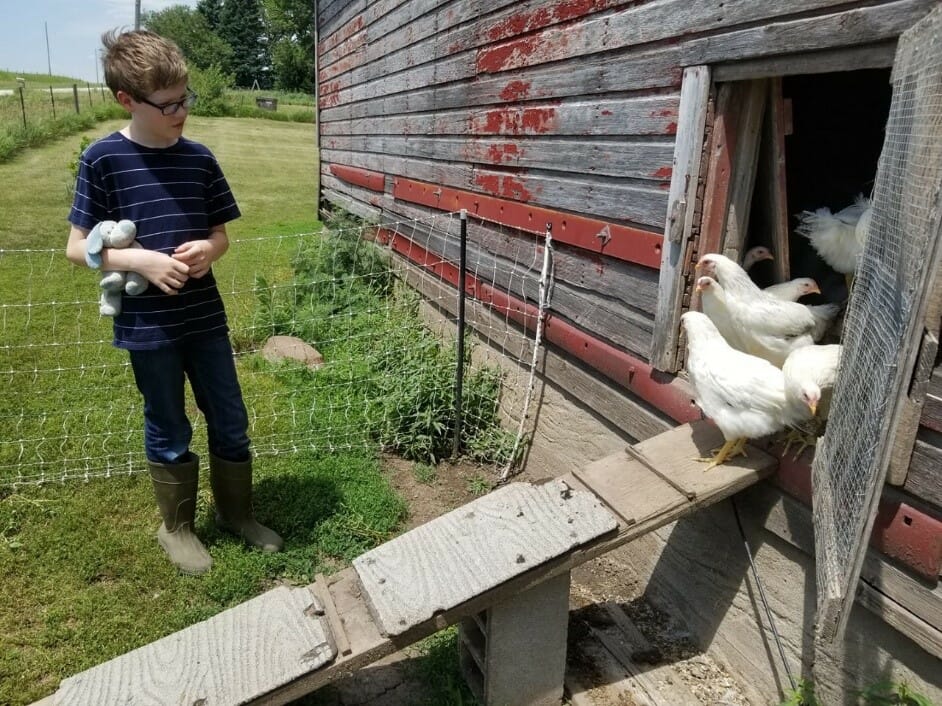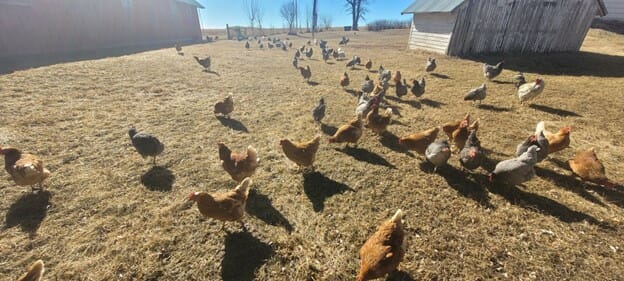What to Think About When You’re Thinking About Chicks
The grass is green, tulips are blooming and the local farm supply store is filled with peeps from hundreds of tiny beaks. It’s chick season!
Amber Mohr, of Fork Tail Farm near Avoca, Iowa, has been raising poultry for nine years. It all began when she tried some eggs from a friend’s flock. “They’re the best gateway to local foods. Once you taste them, there’s such a vast difference in the product compared to what you’re used to as a consumer.”
Having raised turkeys, broilers and layers over the years, Amber now focuses mainly on egg production. She shared some of her experiences and lessons learned when it comes to everything chicks.
1. Choose a Breed
Here’s where you get to shape your flock. What do you want from it? Meat birds, layers or dual-purpose? Some breeds do better on pasture than others. Maybe profit isn’t your goal, and you can choose the prettiest breeds to color your farmyard.
Amber alternates egg laying varieties that complement each other for her production. She’ll get a dual-purpose heritage breed one year, and then alternate with a hybrid sex-linked variety the next. Heritage breeds lay longer- she’s still getting acceptable egg production rates after six years. The sex-linked have high initial production but don’t lay for as many years. Changing breeds each year also helps her identify when it’s time to cull the older generations.
2. Brooder Management
Once your chicks arrive, either from the store or through the mail, it’s time to settle them in their new home. There are some key aspects to keep in mind:
Temperature
The first-year Amber raised chicks in a drafty barn. Even after building temporary walls for insulation, it was still too cold. Moving the brooder to their uninsulated garage did the trick. While still the same ambient temperature as the barn, it was tight enough to prevent drafts.
You’ll also want to make sure your heat lamps are providing ample but not too much heat. At their smallest, chicks need to stay at around 95 degrees Fahrenheit; that temperature can be reduced by about five degrees a week as they grow. Amber has two heat lamps that she starts close to the ground and raises as needed. If the weather suddenly gets cold, she has a third heat lamp available as backup.
Brooder
Amber uses an old 10-foot-long stock tank to hold the chicks. She subdivides the space with plywood and gives them more room as they grow. To keep the chicks in, and predators like rats out, she covers the tank with hardware cloth.
Bedding
For clean and comfortable living, Amber layers diatomaceous earth, barn lime and large flake woodchips. For the first three or four days, she covers the woodchips with layers of newspaper sheets. When chicks are very small, pecking at woodchips can lead to digestive issues and death. After four days, Amber feels confident the chicks will be big enough to not need the newspaper anymore. But keep an eye for chicks with poop encrusted butts; that’s a sign of trouble.
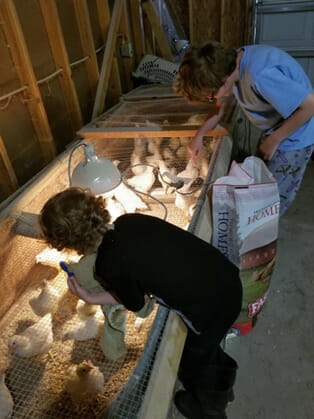
Delaware pullets JUST before moving into the outdoor coop. They’ve been given the full space in the tank, and the hardware cloth keeps them from jumping out.
Water
When you’re introducing your chicks to their new home, make sure you gently dip their beak into their water as you set them in the brooder. This will orient them to the water’s location and what container to associate it with in the future. Be sure to also include electrolytes and vitamins for chicks dissolved in their water.
Amber didn’t know to do that starting out and lost 20% of her chicks after a particularly harrowing journey through the mail. Ever since then, she’s included supplements in their water, leading to a 100% survival rate.
Food
Chicks need a special starter feed for roughly the first 8 weeks of life. Amber simply buys two bags of starter for her 50 chicks and switches over to a mix for older birds when she runs out.
3. Adaptability
This comes in two forms:
- You have to be adaptable to the animal: watching and responding to its needs; monitoring the amount of heat, water and food intake; determining if they are mature enough to go outside. “Every year is different, every season is different and every breed is a little different,” Amber says. “It’s about watching the animal, not a clock or a schedule.”
- Adaptability is also required when dealing with the logistics of life. Because of supply issues, her order for chicks is months behind schedule. Another PFI farmer had only a 24-hour notice that their chicks would arrive weeks early. Sometimes life happens outside your control, and all you can do is go with the flow.
With these tips from Amber in mind, you’re ready to start your chicken journey. Become a member, and join the PFI livestock email listserv to ask other farmers for help or advice when you’re diving into the stream and adapting to challenges.

